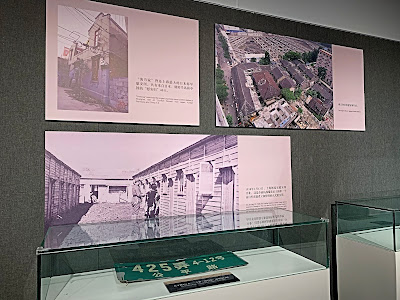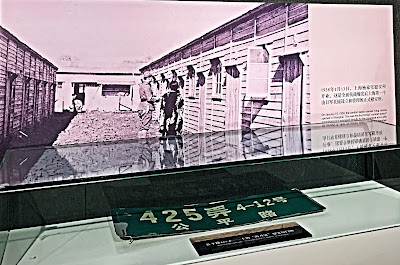Nanjing Massacre Memorial Hall
Exhibition of the Crimes of Japanese 'Comfort Women' System
- Centered on China and the Korean Peninsula
Between 1932 to 1945, the Japanese army forced women from many countries to become military sex slaves. Comfort stations were established first in Shanghai, China and then they mushroomed wherever the Japanese troops went, which include counties in the Southeast Asia.
Young women were either tricked or kidnapped into being sex slaves.
It was a dark period of time for these victims. They were abused and beaten. Food was never enough. The comfort stations were usually in a filthy state.
Research have shown that about 400,000 women in Asia were forced to serve as 'comfort women' and nearly 200,000 were Chinese women.
Preface
"The term 'Comfort Women' specially refers to women who were forced to be sex slaves and provide sex services to the Japanese army during the war. During the World War II, Japanese militarists established a comprehensive system of 'Comfort Women' by forcibly recruiting a large number of young women mainly from China and the Korean Peninsula, thus China and the Korean Peninsula became the main victim areas of this system. The system 'Comfort Women' implemented by Japanese militarism is an institutionalized national crime trampling on women's human rights, violating international humanitarian regulations and rules of war."
"The 'Comfort Women' system was established and improved gradually during the period of Japanese militarists' invasion of China. With the escalation of the aggression, the 'Comfort Women' system was also expanded from China to the Southeast Asia and other regions. After Japan surrendered, the 'Comfort Women' system was dead."
The Nanjing Massacre and the Establishment of the 'Comfort Women' System
"On December 13, 1937, Japanese army occupied Nanjing. In just 6 weeks, nearly 20,000 incidents of rape, gang rape took place in the city. Under the pressure of strong condemnation of international public opinion, also because of the serious venereal disease among the army, the Japanese army officially established the 'Comfort Women' system in Nanjing."
"The 'Daiichi Saloon' in Shanghai was the first comfort station designated as the Imperial Japanese Navy, remaining opened from January 1932 to the end of the war, 1945. The picture shows the aerial view of the original site of the comfort station."
" Lin Lingdi, a witness of the 'Daiichi Saloon' comfort station, said: "We called it 'Daiichi'. Its landlady often came to my place to order small wooden basins. Women inside all wore kimonos and clogs." "
Window of 'Uminoya' comfort station in Shanghai
Wooden door board from 'Uminoya' comfort station in Shanghai
Stone pillar in 'Uminoya' comfort station in Shanghai
Iron bolts
Condoms
Ointment
Physical examination operating table for 'comfort women'
A notice board with the regulations of the comfort station in the Japanese comfort station of Huayuelou, Xiaguan District, Nanjing
A sample identification card of Renmin comfort station in No. 2 Gongyuan East Street, Nanjing
A team of Japanese soldiers waiting outside the comfort station.
The regulations of the comfort station were hung on the wall behind them.
"With the expansion of Japan's invasion of China, the Japanese army fully implemented the 'Comfort Women' system in all the occupied areas, including cities in more than 20 provinces throughout the country."
" On January 13, 1938, the comfort station named Yang Jiazhai opened in Shanghai"
Some comfort stations around China
Comfort women victims from the Korean Peninsula
Statues of Comfort Women all over the world today
Comfort women victims from Indonesia, Burma and Philippines
" French painter Christian Poirot creating oil paintings themed on comfort women in the Nanjing Museum of the Site of the Lijixiang Comfort Stations."
On August 15, 1945, Japan surrendered and the 'Comfort Women' system ended in China.
Extra information were from the following websites:
history.com
asianstudies.org











































No comments:
Post a Comment